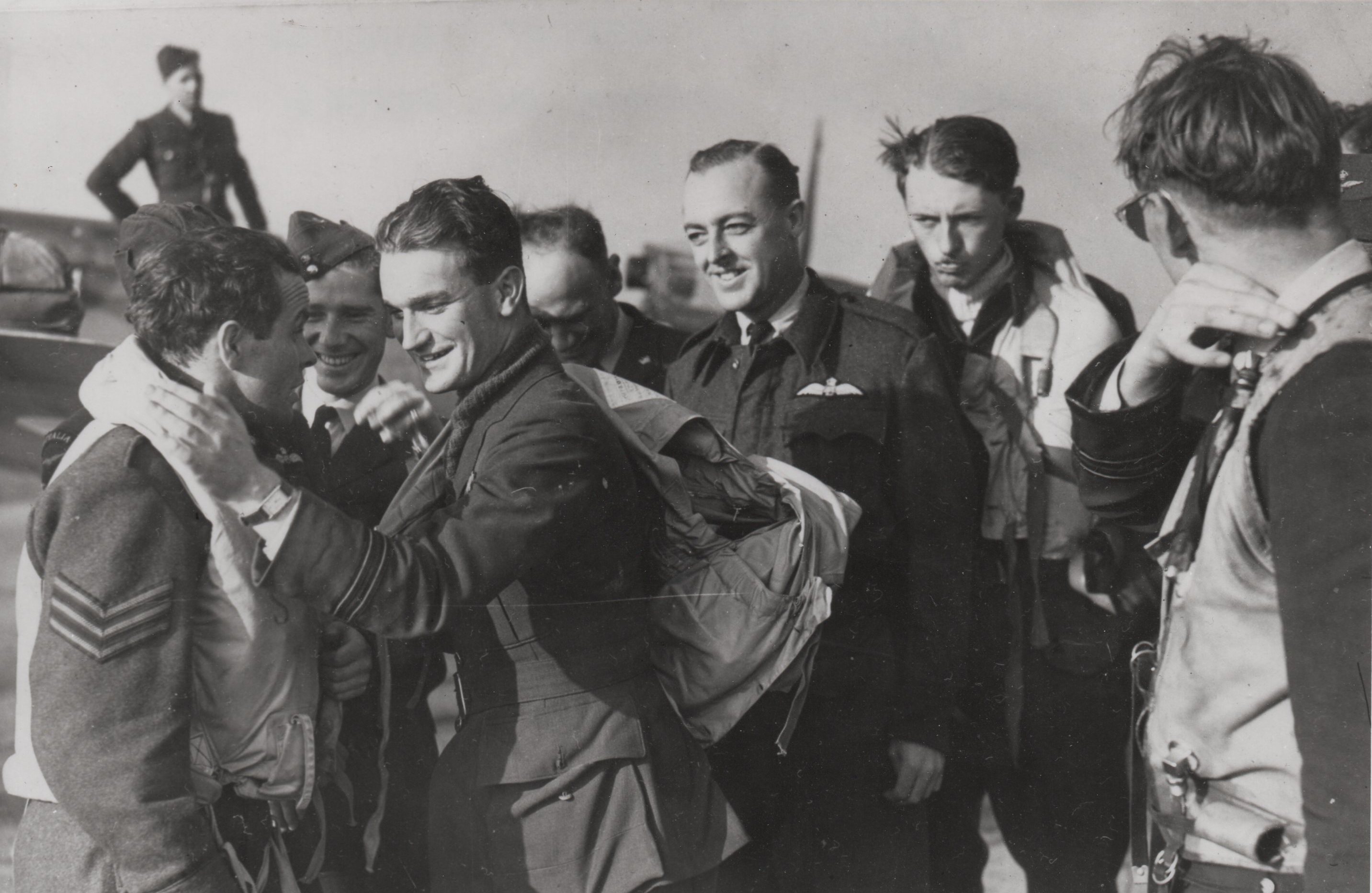
Brendan Eamonn Fergus Finucane – universally known as ‘Paddy’ – was born in Dublin on 16 October 1920, the eldest of five children. Before the Second World War, the family migrated to Richmond, Surrey, Paddy achieving a Short Service Commission in the RAF during 1938. His elementary flying training was completed at Sywell – a course he nearly failed. Eventually, his Service Flying Training was completed at Montrose, Evanton and South Cerney before reporting to 7 Operational Training Unit at Hawarden on 28 June 1940, to fly Spitfires. On 13 July 1940, three days after the Battle of Britain officially began, Pilot Officer Finucane arrived at Hornchurch and 65 Squadron. Paddy joined ‘B’ Flight, commanded by Flight Lieutenant GAW ‘Sammy’ Saunders (later to become Squadron Commander), whose pilots included the ‘ace’ Bill Franklin DFM, Ken Hart and Tommy Smart (later killed over Malta).

During the Battle of Britain, 65 Squadron operated from Hornchurch and Rochford. Between 1 and 18 August 1940, Paddy flew fifty-two sorties, and continued flying operationally until the Squadron moved North, to Turnhouse in Scotland, on 28. During that critical period in 11 Group, however, Paddy had destroyed two Me 109s, probably destroyed two more and damaged another. A year after war was declared, Paddy was promoted to flying officer – and was remembered by a comrade, the Polish ‘Gandy’ Drobinski as ‘a very quiet sort of man, totally dedicated to being a fighter pilot; he spent little time in the bar’. Gandy even engaged Paddy in dogfight practice – which ended far below the specified minimum height, such was the pair’s enthusiasm. On 28 November 1940, 65 returned South, to Tangmere, flying from where Paddy destroyed more enemy aircraft before again heading North, to Kirton, on 26 February 1941.
There a new Australian fighter squadron, 452, was being formed, on which Paddy, promoted to flight lieutenant, became a flight commander on 14 April 1941. Soon afterwards, whilst providing a display of air drill over Scunthorpe, he collided with his Commanding Officer, Squadron Leader RG Dutton. Paddy’s airscrew nearly severed Dutton’s tail, but the Squadron Leader miraculously managed to crash-land in a turnip field, smashing through a dry-stone wall, and survived. A month later, Paddy was awarded the DFC, and on 21 July 1941, 452 Squadron moved to Kenley, the famous Surrey Sector Station.

Almost immediately Paddy’s score of aerial victories increased, recognised with not one but two bars to his DFC. By this time, his exploits had captured the public’s imagination to the extent that the press, having previously described him as an anonymous Irish flight lieutenant, could with-hold his name no longer. Three weeks before Paddy’s twenty-first birthday, an Air Ministry bulletin declared that as his score stood at twenty, he required one more victory before his birthday – he got it. On 9 August 1941, the RAF legend Wing Commander Douglas Bader was captured – leading to the press dubbing Paddy ‘Bader’s successor’. The propaganda machine had lost one hero but found another.

Paddy was wounded only once during operations, when a German bullet hit his leg on an anti-shipping sortie. After a perfect landing he was found unconscious in the cockpit and duly hospitalised until January 1942. On 21 October 1941, he received the DSO and in February 1942, promoted to squadron leader, was given command of 602 Squadron at Redhill. More combat successes followed. On 21 June 1942, Paddy was promoted to wing commander and became ‘Wing Commander (Flying)’ at Hornchurch. Sadly, this well-deserved appointment, the pinnacle of a fighter pilot’s career, would be short-lived.

On 15 July 1942, Wing Commander Finucane briefed his pilots for a ‘Ramrod’ operation against a German army camp near Le Touquet. The Hornchurch Wing flew East, across the Thames, then over the Channel at zero feet, avoiding detection by German radar. The attack was timed for the angry Spitfires to arrive over their target whilst enemy soldiers queued for lunch. At 1222 hrs the French coast was crossed at Le Touquet – when a German machine-gunner opened fire from the dunes below. A single bullet damaged Paddy’s radiator – of which he was unaware. His wingman, Pilot Officer Aikman, informed his leader of the damage, causing Paddy to turn hard right, taking a course that would take him back over the coast and home. As the two Spitfires re-crossed the coast, Aikman let fly, destroying a German machine-gun position. Streaming white glycol fumes, Paddy had no choice but to ditch in the sea. The Spitfire gently alighted on the waves but instead of momentarily remaining afloat, giving the pilot time to exit the aircraft, it plunged vertically into the depths. Aikman circled the spot, directing RAF Air Sea Rescue launches to the spot, but only an oil slick marked the grave of the great Paddy Finucane – one of Fighter Command’s greatest fighter pilots.
The whole free world mourned. Three thousand people crowded into Winchester Cathedral for his Requiem Mass. In his adoptive home town of Richmond, the Mayor launched an appeal for a ‘Finucane Memorial’. The Finucane family received a plethora of sympathetic messages, including telegrams from officers of air rank and even two Soviet aces.
The loss of Wing Commander BEF Finucane DSO, DFC & two Bars was yet another highly experienced and successful fighter pilot and leader lost on a futile operation – losses Fighter Command could ill-afford.
Wing Commander Finucane remains missing and is remembered on the Runnymede Memorial; he was twenty-one.

